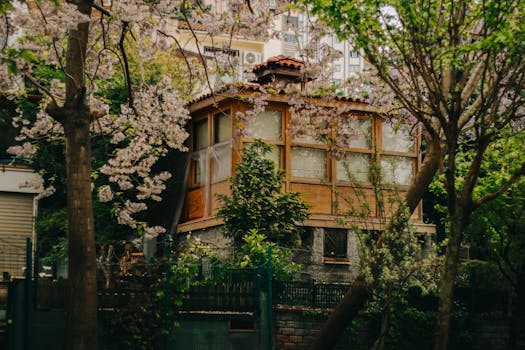
Urban Green Spaces: The Future of Outdoor Living in European Cities by 2025
Urban Green Spaces are becoming increasingly important in European cities, and for good reason. As the world becomes more urbanized, the need for green spaces has never been more pressing. In this article, we will explore the future of outdoor living in European cities and how urban green spaces will play a crucial role in shaping it.
Introduction to Urban Green Spaces
Urban Green Spaces refer to any area of vegetation in an urban environment, including parks, gardens, green roofs, and green walls. These spaces provide a range of benefits, including improved air quality, reduced noise pollution, and increased biodiversity. They also offer opportunities for recreation, socialization, and relaxation, making them an essential component of urban planning.
The Importance of Urban Green Spaces in European Cities
European cities are facing numerous challenges, including climate change, urbanization, and pollution. Urban Green Spaces can help mitigate these issues by providing a range of ecosystem services, including carbon sequestration, stormwater management, and heat island mitigation. They also contribute to improved mental and physical health, increased community engagement, and enhanced economic development.
Benefits of Urban Green Spaces
The benefits of Urban Green Spaces are numerous and well-documented. Some of the most significant advantages include:
- Improved air quality: Urban Green Spaces can help reduce air pollution by absorbing pollutants and producing oxygen.
- Reduced noise pollution: Green spaces can act as a buffer, reducing noise levels and improving overall quality of life.
- Increased biodiversity: Urban Green Spaces provide habitat for a range of plant and animal species, supporting local ecosystems.
- Recreation and socialization: Green spaces offer opportunities for recreation, socialization, and relaxation, making them an essential component of urban planning.
- Climate change mitigation: Urban Green Spaces can help reduce the urban heat island effect, mitigate the effects of climate change, and support carbon sequestration.
Challenges and Opportunities for Urban Green Spaces in European Cities
Despite the many benefits of Urban Green Spaces, there are also challenges to be addressed. Some of the most significant obstacles include:
- Lack of funding: Creating and maintaining Urban Green Spaces requires significant investment, which can be a challenge for cash-strapped cities.
- Limited space: European cities are often densely populated, making it difficult to find space for new green spaces.
- Competeting priorities: Urban planning often prioritizes development over green spaces, making it challenging to balance competing interests.
- Climate change: Climate change poses a significant threat to Urban Green Spaces, requiring innovative solutions to ensure their resilience.
Future of Outdoor Living in European Cities
By 2025, European cities will be shaped by a range of factors, including urbanization, climate change, and technological innovation. Urban Green Spaces will play a crucial role in shaping the future of outdoor living, providing opportunities for recreation, socialization, and relaxation. Some of the most significant trends that will shape the future of Urban Green Spaces include:
- Increased focus on sustainability: Cities will prioritize sustainability, incorporating green infrastructure into urban planning.
- Integration with technology: Urban Green Spaces will be designed to incorporate technology, including smart sensors, green roofs, and urban agriculture.
- Community engagement: Green spaces will be designed to foster community engagement, providing opportunities for socialization and recreation.
- Resilience and adaptation: Urban Green Spaces will be designed to be resilient and adaptable, able to withstand the impacts of climate change.
Conclusion
Urban Green Spaces are the future of outdoor living in European cities. By prioritizing sustainability, incorporating technology, and fostering community engagement, cities can create green spaces that support the health, well-being, and prosperity of their citizens. As we look to the future, it is essential that we prioritize Urban Green Spaces, ensuring that they remain a vital component of urban planning.






